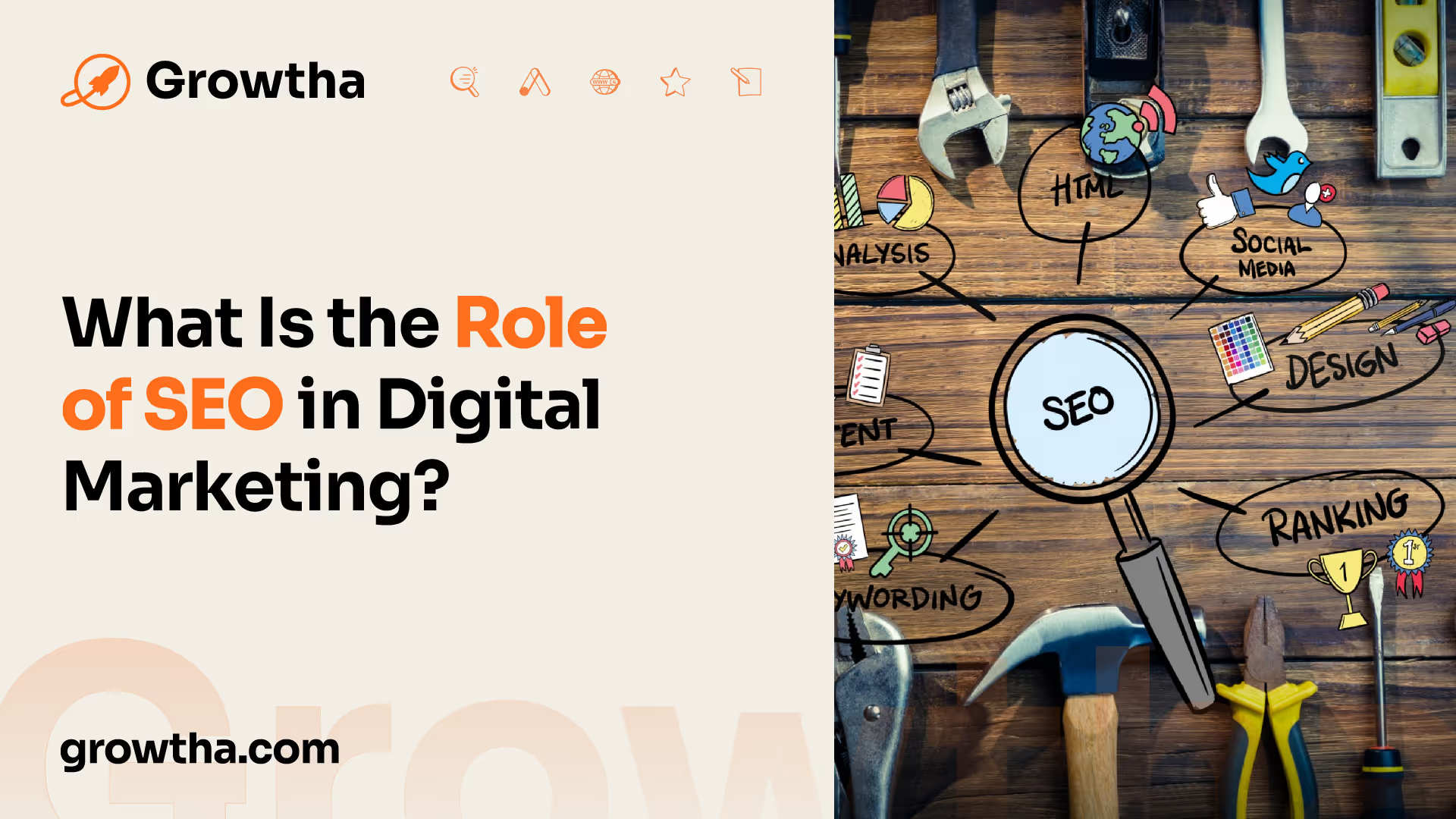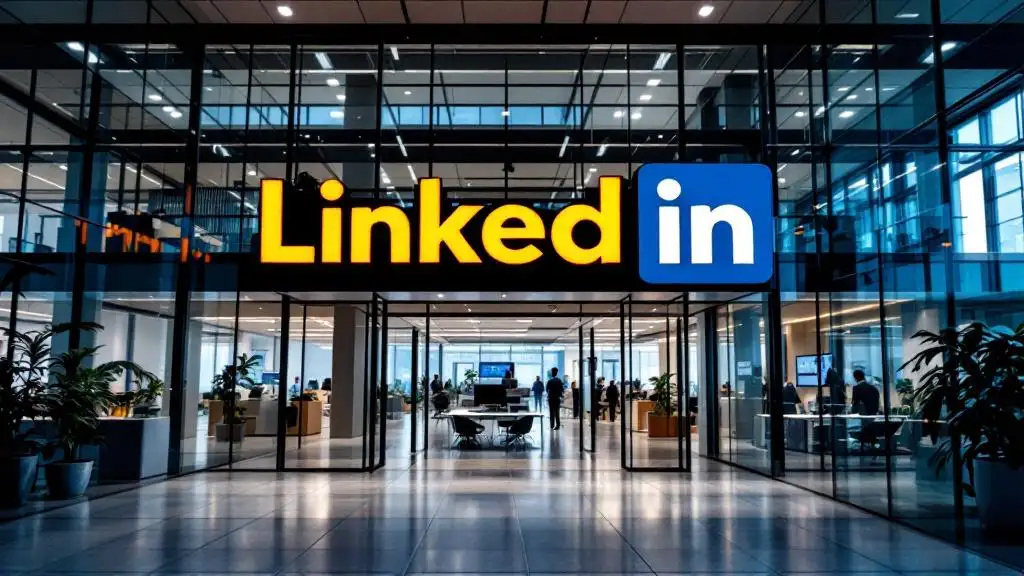What Is the Role of SEO in Digital Marketing?
To fully comprehend the role of SEO in digital marketing, it is essential to understand its basics, including its definition and importance.


What Is the Role of SEO in Digital Marketing?
Understanding SEO Basics
To fully comprehend the role of SEO in digital marketing, it is essential to understand its basics, including its definition and importance.
Definition of SEO
SEO stands for Search Engine Optimization. It refers to the process of optimizing a website to improve its visibility and ranking in search engine results pages (SERPs). The goal of SEO is to increase organic, unpaid traffic to a website by making it more relevant and appealing to search engines.
According to the Digital Marketing Institute, SEO involves various techniques and strategies, such as optimizing website content, improving website structure, and enhancing user experience. It aims to align a website with search engine algorithms, enabling search engines to understand and rank the website more effectively.
Importance of SEO
The importance of SEO in digital marketing cannot be overstated. In today's highly competitive online landscape, search engines are the primary method through which users discover information, products, and services. Ranking well in search results is crucial for businesses and brands to gain visibility and attract organic traffic.
According to Search Engine Land, SEO drives 53% of all website traffic. This statistic highlights the significant impact that SEO can have on a website's visibility and overall marketing efforts. Moreover, the global SEO industry is projected to reach $122.11 billion by 2028, further emphasizing its importance in the digital marketing realm.
One of the primary reasons why SEO is vital is its sustainability. Unlike other marketing channels that may result in temporary traffic, SEO provides long-term benefits. By consistently optimizing a website and adhering to SEO best practices, businesses can establish a strong online presence and attract a steady stream of organic traffic.
SEO also plays a crucial role in helping businesses achieve their marketing goals. By ranking well in search results, businesses can increase brand visibility, reach their target audience, and drive relevant traffic to their website. This, in turn, can lead to higher conversions, improved sales, and a positive impact on the bottom line.
Furthermore, SEO and content marketing are closely intertwined. SEO and content complement each other, with SEO driving traffic and leads, and content engaging and nurturing those leads. By integrating both strategies into a comprehensive marketing approach, businesses can achieve more significant and sustainable outcomes.
In summary, SEO is a critical component of digital marketing. Its ability to drive organic traffic, improve website visibility, and deliver real business results makes it an indispensable marketing channel for brands, businesses, and organizations of all sizes. By understanding and leveraging SEO effectively, businesses can enhance their online presence, attract their target audience, and achieve their marketing objectives.

Impact of SEO on Website Visibility
In the realm of digital marketing, Search Engine Optimization (SEO) plays a crucial role in determining the visibility of a website on search engines such as Google, Bing, and Yahoo. By employing various techniques and strategies, SEO aims to improve a website's organic search engine rankings, significantly impacting its online presence.
Enhancing Organic Search Rankings
The primary goal of SEO is to enhance a website's organic search rankings. When a website ranks higher in search engine results, it is more likely to be seen by users. High-ranking websites are often perceived as more credible and trustworthy, which can enhance the website's reputation and authority in the industry [1].
To achieve higher search rankings, SEO professionals employ various strategies, including optimizing website content, improving website speed and performance, and building high-quality backlinks. By implementing on-page and off-page SEO techniques, websites can increase their visibility and search engine rankings, ultimately leading to improved organic traffic and a stronger online presence [2].
Increasing Organic Traffic
One of the key benefits of SEO is its ability to drive organic traffic to a website. Organic traffic refers to the visitors who come to a website through unpaid search engine results. By optimizing a website's visibility and search rankings, SEO helps attract more relevant and targeted visitors.
When a website appears on the first page of search results, it is more likely to receive a higher volume of organic traffic. Users tend to trust and click on websites that prominently appear in search engine results, leading to increased visibility and exposure. By outranking competitors for relevant keywords, websites can secure a more prominent position in search results, attracting a larger share of organic traffic [1].
Continuous Optimization for Success
SEO is an ongoing process that requires continuous optimization and monitoring to maintain and enhance search rankings over time. Search engine algorithms frequently change, and new competitors may enter the market, making it essential for websites to adapt and refine their SEO strategies.
Regularly updating website content, optimizing meta tags, monitoring keyword performance, and building quality backlinks are some of the key activities involved in continuous SEO optimization. By staying vigilant and adapting to search engine algorithm updates, websites can ensure long-term success in terms of visibility and organic traffic [2].
In summary, SEO significantly impacts the visibility of a website in digital marketing. By enhancing organic search rankings, increasing organic traffic, and continuously optimizing strategies, websites can improve their online presence and reach a wider audience. Implementing SEO best practices, such as enhancing user experience and emulating top-performing pages, further contributes to the overall visibility and success of a website.

Role of Keywords in SEO
Keywords play a crucial role in search engine optimization (SEO) by helping search engines understand the relevance of your content to users' queries. By strategically incorporating keywords into your digital marketing efforts, you can improve your website's visibility and attract organic traffic. Let's explore the importance of keywords, the different types of keywords, and effective keyword placement strategies.
Importance of Keywords
Keywords are words or phrases that users enter into search engines when looking for specific information or solutions to their queries. Incorporating relevant keywords into your content strategy helps search engines rank your website pages and enables users to find your content more easily [3]. By understanding what users are searching for, you can tailor your content to meet their needs and increase the chances of your website appearing in search engine results pages (SERPs).
When you use keywords strategically, it increases your website's visibility and drives targeted traffic. By targeting keywords that align with your business and the needs of your audience, you improve your chances of ranking higher in search results and attracting users who are actively seeking the information or products you offer [3].
Types of Keywords
Keywords can be categorized into different types based on their length and search intent. Two common types of keywords are:
- Short-tail keywords: Short-tail keywords are broad and concise phrases that typically consist of one to three words. These keywords have high search volumes but are more competitive. For example, "digital marketing" is a short-tail keyword. While they can attract a large audience, they may not always align with specific user intent.
- Long-tail keywords: Long-tail keywords are more specific and usually consist of four or more words. These keywords have lower search volumes but are less competitive. For example, "role of SEO in digital marketing" is a long-tail keyword. Long-tail keywords tend to attract a more targeted audience with higher purchase intent, as they reflect specific user queries and needs [3].
Understanding the types of keywords and incorporating a mix of short-tail and long-tail keywords allows you to target a broader range of search queries and attract relevant traffic to your website.
Keyword Placement Strategies
Effective keyword placement within your content is crucial for optimizing your website's visibility. Here are some strategies to consider:
- Incorporate keywords naturally: Avoid keyword stuffing, which can negatively impact your website's ranking. Instead, focus on using keywords naturally throughout your content in headings, subheadings, and within the body text. This helps search engines understand the context and relevance of your content to user queries.
- Optimize meta tags and URLs: Include relevant keywords in your page titles, meta descriptions, and URLs. This helps search engines and users quickly understand what your page is about.
- Create high-quality content: Develop informative and engaging content that incorporates keywords naturally. By providing valuable information and addressing user needs, you increase the likelihood of attracting organic traffic and earning backlinks from other reputable websites.
- Conduct keyword research: Use keyword research tools to identify relevant keywords and assess their search volume and competition. This research helps you understand the popularity and competitiveness of keywords, allowing you to target the most appropriate ones for your content.
Remember that effective keyword placement is not just about ranking higher in search results but also providing valuable content that meets the needs of your target audience. By understanding the role of keywords in SEO and implementing effective strategies, you can enhance your website's visibility, attract targeted traffic, and improve your overall digital marketing efforts.
Components of SEO
To fully grasp the role of SEO in digital marketing, it's essential to understand the three core components or pillars that make up SEO: technical optimization, on-page optimization, and off-page optimization.
Technical Optimization
Technical optimization, as explained by the Digital Marketing Institute, refers to activities on a website that are designed to improve SEO but are not directly related to content. These activities focus on the technical aspects of a website and its infrastructure to enhance its visibility and performance in search engine rankings.
Some key areas of technical optimization include:
- Website Speed: Optimizing the website's loading speed to ensure fast and seamless user experiences.
- Mobile Responsiveness: Ensuring that the website is mobile-friendly and provides a smooth browsing experience across different devices.
- Crawlability and Indexability: Ensuring search engines can easily crawl and index the website's pages.
- Site Structure and Navigation: Organizing the website's structure and navigation in a logical and user-friendly manner.
- URL Structure: Optimizing the URLs to make them descriptive and user-friendly.
By addressing these technical aspects, website owners can enhance their website's visibility and accessibility to search engines, ultimately improving their search engine rankings.
On-Page Optimization
On-page optimization focuses on optimizing the content on a website to make it relevant and appealing to both users and search engines. This component aims to provide a great user experience by delivering high-quality and valuable content that aligns with searchers' intent.
Key aspects of on-page optimization include:
- Keyword Research: Identifying relevant keywords that align with the target audience's search queries and search intent [3].
- Title Tags and Meta Descriptions: Writing compelling and descriptive title tags and meta descriptions that accurately represent the content and entice searchers to click.
- Heading Tags: Properly structuring the content using heading tags (H1, H2, etc.) to improve readability and hierarchy.
- Content Optimization: Creating high-quality, informative, and engaging content that satisfies searchers' intent and provides value [4].
- Internal Linking: Establishing relevant internal links within the website to facilitate navigation and improve the overall user experience.
- Optimized Images: Optimizing images by using descriptive alt tags and compressing them to improve page load times.
By implementing effective on-page optimization strategies, website owners can improve their chances of ranking higher in search engine results pages (SERPs) and attract organic traffic.
Off-Page Optimization
Off-page optimization involves activities outside of the website that aim to enhance its search engine rankings. This component focuses on building authority and credibility for the website through external factors.
Key aspects of off-page optimization include:
- Link Building: Acquiring high-quality backlinks from reputable and relevant websites to improve the website's authority and visibility.
- Social Media Engagement: Engaging with the target audience through social media platforms to increase brand visibility and drive traffic to the website.
- Online Reputation Management: Monitoring and managing online reviews and mentions to maintain a positive brand reputation.
- Guest Blogging: Writing and publishing informative and relevant articles on external websites to establish thought leadership and gain exposure.
Off-page optimization activities indirectly contribute to SEO success by improving the website's online presence and reputation. These activities help search engines recognize the website as a trusted and authoritative source, leading to higher rankings in search results.
By understanding and implementing these three components of SEO—technical optimization, on-page optimization, and off-page optimization—digital marketers can optimize their websites for search engines, increase visibility, and drive organic traffic to achieve their marketing goals.
SEO Best Practices
When it comes to digital marketing, incorporating SEO best practices is crucial for achieving success and improving website visibility. In this section, we will explore three key SEO best practices: user experience enhancement, targeted traffic acquisition, and emulating top-performing pages.
User Experience Enhancement
One of the fundamental aspects of SEO is enhancing the user experience on a website. By optimizing various elements, websites can provide a positive experience for visitors, which in turn improves SEO performance. Some key practices for enhancing user experience include:
- Page load times: Optimizing page load times is essential for keeping users engaged. Slow-loading pages can lead to higher bounce rates and decreased user satisfaction. By minimizing unnecessary code, optimizing images, and leveraging caching techniques, websites can improve page load times.
- Content accessibility: Making sure that content is accessible to all users, including those with disabilities, is crucial. This can be achieved by using descriptive alt tags for images, providing transcripts for videos, and ensuring proper heading structure throughout the content.
- Logical site structure: Creating a logical and intuitive site structure helps users navigate through the website easily. This includes organizing content into well-defined categories, using clear and descriptive navigation menus, and implementing internal linking to guide users to relevant pages.
By focusing on user experience enhancement, websites can increase engagement, lower bounce rates, and indirectly improve their visibility in search engine results.
Targeted Traffic Acquisition
Targeted traffic acquisition is another important aspect of SEO. It involves attracting the right audience to a website, ensuring that the visitors are relevant to the products, services, or information being offered. To acquire targeted traffic, consider the following strategies:
- Keyword research: Conducting thorough keyword research helps identify the phrases and terms that potential visitors are using in search engines. By optimizing website content around these targeted keywords, websites can attract the right audience.
- Content optimization: High-quality content is crucial for SEO success. Creating informative, relevant, and engaging content that aligns with the target audience's needs and interests not only attracts visitors but also helps improve search engine rankings. Content should be the first priority when thinking about SEO.
- Promotion and outreach: Actively promoting the website and its content through various channels, such as social media, email marketing, and influencer collaborations, can help attract targeted traffic. Engaging with the target audience and building relationships through these channels can lead to increased visibility and website visits.
By acquiring targeted traffic, websites can increase the likelihood of conversions, whether that means making a purchase, signing up for a newsletter, or any other desired action.
Emulating Top-Performing Pages
Emulating top-performing pages is a strategy that involves analyzing and learning from the pages that are already ranking well in search engine results. By understanding what makes these pages successful, websites can optimize their own content and improve their chances of ranking higher. Some key practices include:
- Content analysis: Analyzing the content of top-performing pages can provide insights into the topics, structure, and format that resonate well with both search engines and users. It's important to note that emulating does not mean copying; rather, it means understanding what works and applying those learnings to create unique and valuable content.
- SEO techniques: Studying the SEO techniques employed by top-performing pages can provide valuable insights. This includes analyzing their use of keywords, title tags, meta descriptions, headings, and internal and external linking strategies. Implementing similar techniques can help improve website visibility.
- User engagement: Paying attention to how top-performing pages engage with their audience can provide inspiration for website improvements. This may include incorporating interactive elements, encouraging user-generated content, or utilizing multimedia to enhance user engagement.
By emulating top-performing pages, websites can gain valuable insights and apply effective strategies to increase their own visibility and ranking in search engine results.
By incorporating these SEO best practices, websites can improve their overall digital marketing efforts, increase website visibility, and attract targeted traffic. Remember that SEO and content marketing work hand in hand, with SEO driving traffic and content engaging and nurturing leads [4]. Utilizing both in a comprehensive digital marketing strategy can yield impressive outcomes.
Advanced SEO Techniques
To further enhance your digital marketing efforts, it's important to explore advanced SEO techniques that can take your website's visibility and performance to the next level. In this section, we will discuss three key techniques: conducting keyword gap analysis, broken link building strategies, and optimizing for People Also Ask (PAA) boxes.
Conducting Keyword Gap Analysis
Conducting a keyword gap analysis is a valuable technique that helps identify keywords your competitors are ranking for, but your own website is not. This analysis allows you to discover content gaps and create relevant content to fill those gaps. By leveraging tools like Semrush's Keyword Gap tool and Organic Research tool, you can gain insights into the keywords your competitors are targeting and ranking for, but you may be missing out on [5].
The process involves comparing your website's keyword rankings with your competitors' rankings and identifying opportunities for improvement. By understanding the keywords your competitors are successfully targeting, you can tailor your content and SEO strategy to capture a larger share of the organic search traffic.
Broken Link Building Strategies
Broken link building is a technique that involves finding broken links on other websites and suggesting that they link to your website instead. This strategy not only helps you build valuable backlinks but also assists website owners in fixing broken links and improving the user experience on their sites.
To implement broken link building, tools like Semrush's Backlink Analytics tool can be utilized to identify broken backlinks of your competitors. Once you've identified these broken links, you can reach out to the websites linking to those broken pages and suggest linking to relevant, high-quality content on your website instead. This mutually beneficial approach allows you to build strong backlinks while helping other website owners improve their site's user experience [5].
Optimizing for People Also Ask (PAA)
Optimizing for People Also Ask (PAA) boxes is an important technique to improve visibility and rankings in search engine results. PAA boxes appear as expandable sections in search results, displaying questions related to the user's query. By optimizing your content to appear in PAA boxes, you can increase your website's visibility and attract more organic traffic.
To optimize for PAA, tools like Semrush's Position Tracking tool can be utilized to identify keywords that trigger PAA boxes in search results. By identifying these keywords, you can optimize your content to rank for those specific queries and increase the likelihood of your website appearing in PAA boxes. This visibility boost not only enhances your website's credibility but also increases the chances of attracting targeted traffic to your site [5].
By implementing these advanced SEO techniques, you can gain a competitive edge in the digital marketing landscape. Conducting keyword gap analysis, utilizing broken link building strategies, and optimizing for PAA boxes will help drive organic traffic, enhance your website's authority, and improve overall visibility. Stay proactive in exploring and implementing advanced SEO techniques to continually improve your digital marketing efforts.
References
[2]: https://medium.com/@officialriyankapaul/in-what-ways-does-search-engine-optimization-seo-impact-a-websites-visibility-on-search-engines-97d99465da4c
[3]: https://blog.hubspot.com/marketing/keywords
[4]: https://searchengineland.com/seo-content-marketing-388978







